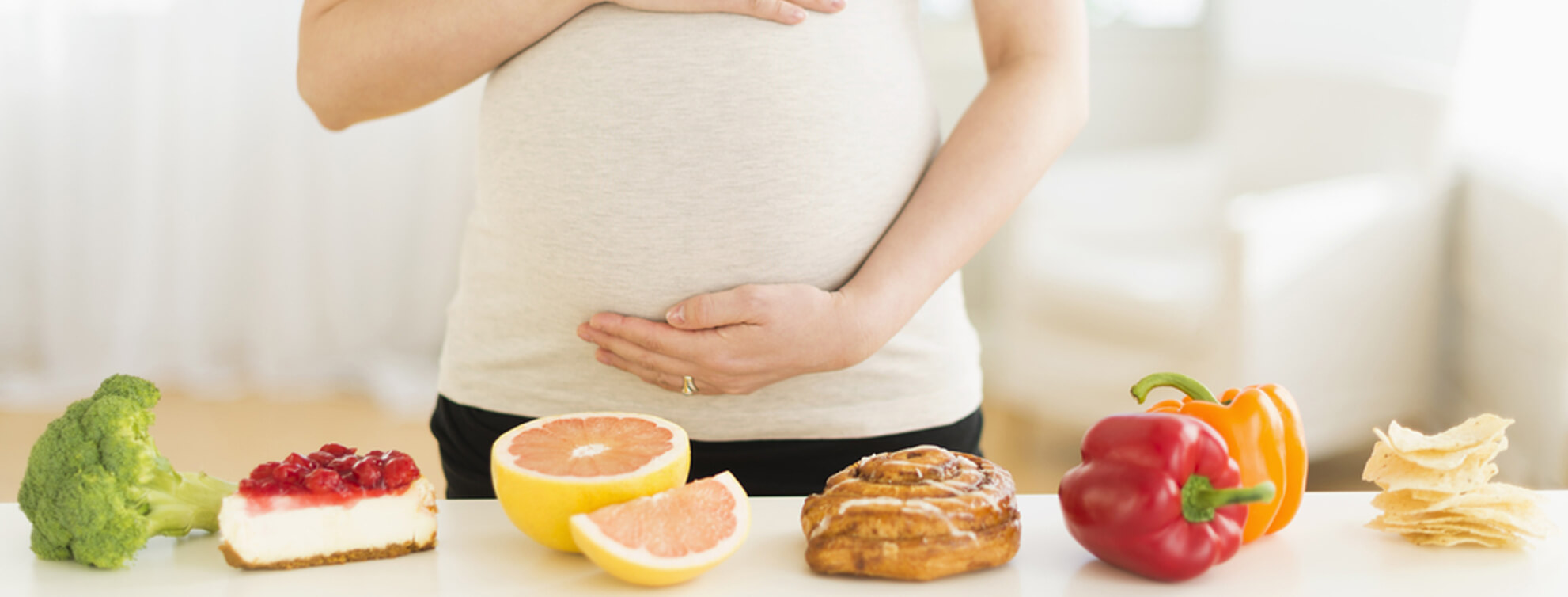
All-Natural, Proven Goodness in a Bottle for Pregnant Mummies
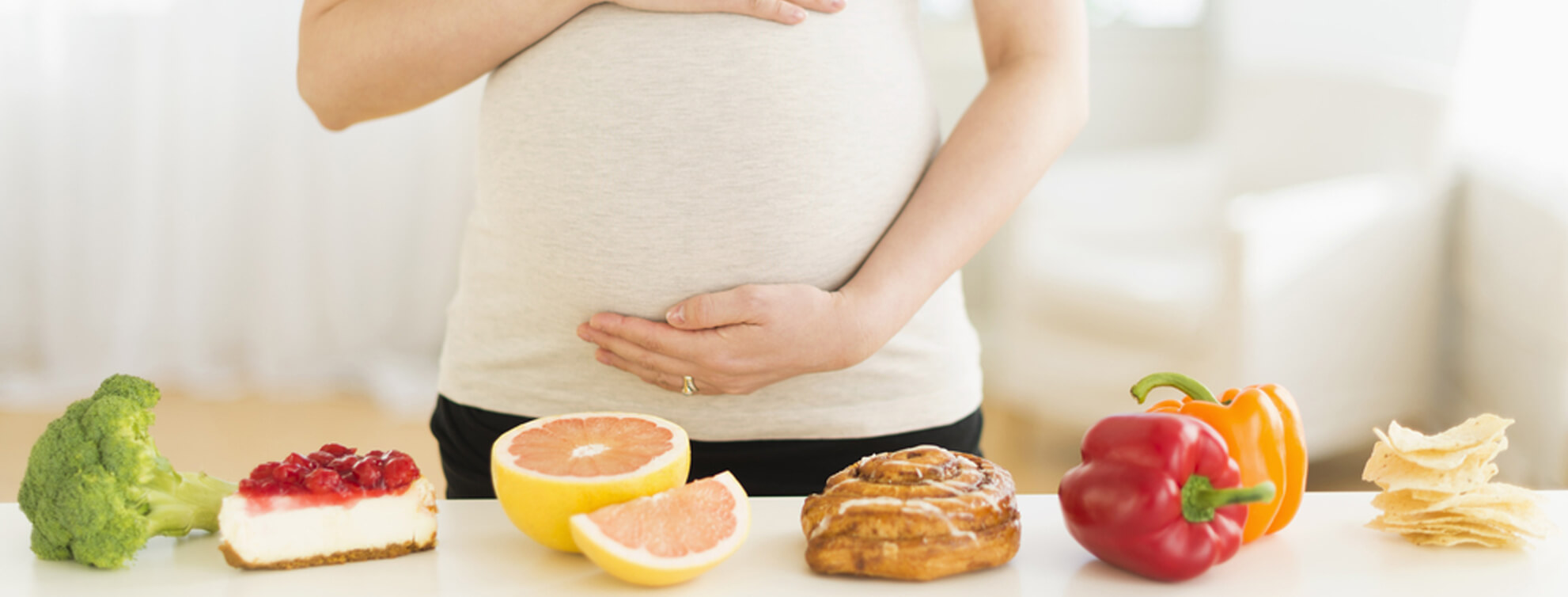
In Chinese tradition, a popular pregnancy tonic is to double-boil chicken in herbs to obtain a highly nutritious tonic for expectant mothers. Chicken is believed to boost Qi energy while strengthening the immune system and lungs.
Most mothers are recommended to consume this nutritious tonic on a daily basis, but it can take up to hours to prepare because of the double-boil method. This technique requires the chicken to be steamed in its own juices, instead of being submerged in water, to produce a concentrated tonic. That’s where BRAND’S® Essence of Chicken comes in handy! While it is suitable for all ages, this bottle of concentrated essence is especially recommended for new mothers-to-be for prenatal nourishment and lactation. Beyond providing prenatal nourishment, here’s what each bottle of BRAND’S Essence of Chicken can do for you:
BRAND’S® Essence of Chicken is a pregnancy & breastfeeding essential backed by science. In a clinical study done on 235 post-delivery mothers, regular intake was shown to promote early milk secretion and improve milk production, while maintaining the high quality of mother’s milk.
By supplementing your pregnancy with regular consumption of chicken extract, it increases lactoferrin*, EGF and TGF-B2 components in the breast milk, which are beneficial to the growth, development and immunity of infants.1
*Lactoferrin is a protein present in human milk and other secretions that protects breast-fed infants against bacterial infections and regulates the absorption of iron in the intestine and delivery of iron to the cells.

Image Credit: Mayo Clinic
Gestational diabetes is a serious pregnancy complication caused by high blood sugar (glucose) levels during pregnancy, which affects 1 in 5 women. If untreated, it could pose an increased risk of type 2 diabetes developing in the child. The main cause of gestational diabetes boils down to one key factor – your diet.
Festive seasons are the biggest pit holes. With all the food, parties and family obligations, cravings tend to be elevated and people tend to eat larger servings of sweet and fatty food, resulting in poor blood sugar control.
However, expectant mothers can now reduce the risk of gestational diabetes with regular consumption of BRAND’S® Essence of Chicken, as it lowers glycaemic response.2,3
Glycaemic response refers to the changes in blood glucose after consuming a carbohydrate-rich food. Decreased glycaemic response has been associated with a lower risk of diabetes and metabolic diseases. So mothers-to-be can now cut themselves some slack and enjoy the festivities with their loved ones!
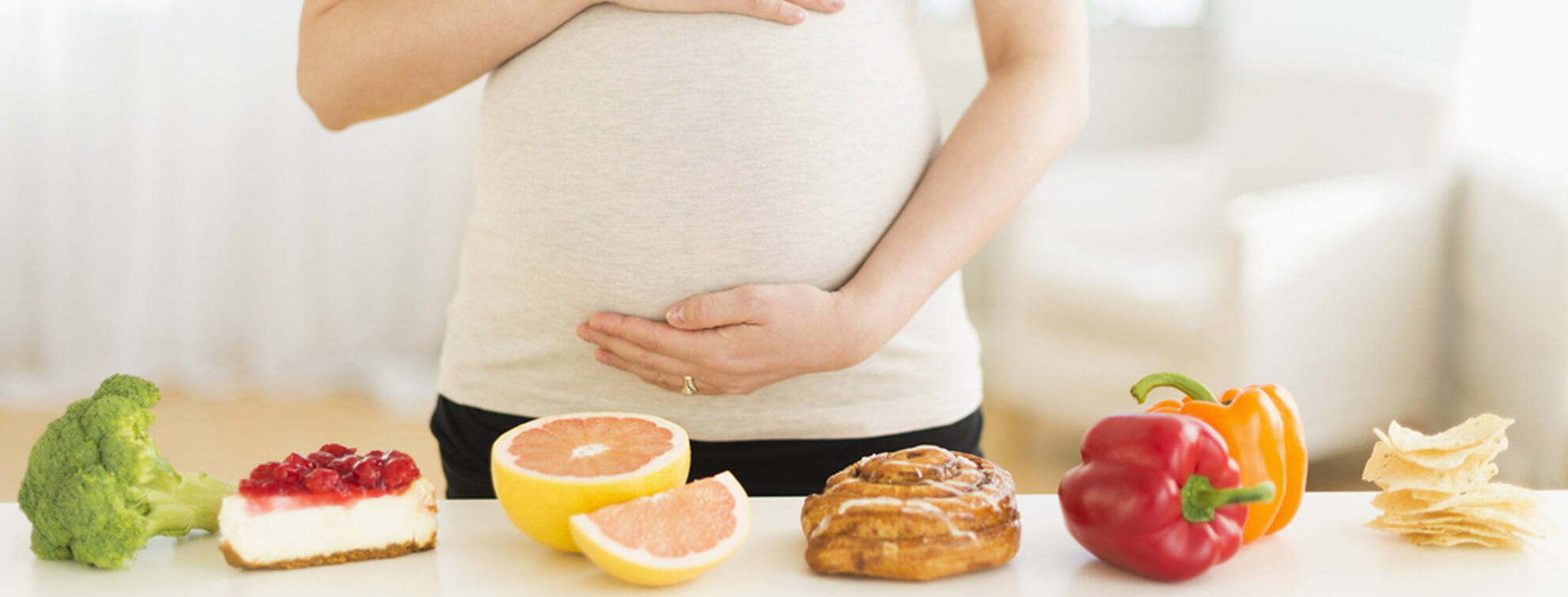
Chicken essence has been widely used as a traditional remedy for fatigue, and every bottle of BRAND’S® Essence of Chicken has been scientifically proven to rise energy levels by up to 5 times. 4,5
Studies have shown that BRAND’S® Essence of Chicken increases your body’s metabolic rate, which in turn increases energy level and improves mental alertness.
Helpful tip: Drink a bottle on the day of delivery for an extra energy boost!
Did You Know: BRAND’S® Essence of Chicken has 0% Fat?
Each bottle of chicken essence contains:
Through a stringent manufacturing process, 100% of fats are removed from high-quality chicken extract to make BRAND’S® Essence of Chicken. Since meat typically gets its characteristic scent and taste from the fats, BRAND’S® Essence of Chicken does not have the ‘chicken smell’ as it is completely fat-free.

Image Credit: www.shutterstock.com
Trusted By Generations: Good For Both Mother And Baby
BRAND’S® Essence of Chicken is the only clinically proven chicken essence that is backed by science and published in over 40 scientific papers. It comes as a highly recommended prenatal nutrition for improved lactation and even as a post-natal supplement during confinement.
The recommended consumption of two bottles per day provides you with the essential nutrition needed to nourish your body and replenish your strength, and remains the choice supplement of many expectant mothers and their families.
Many Ways To Drink It:
BRAND’S® Essence of Chicken is available island-wide in leading supermarkets and selected online retailers.
For a limited time only, enjoy 10% discount off BRAND’S® Essence of Chicken –Original 30 bottles x 68ml pack (RSP $84.70), exclusively on Fairprice Online.
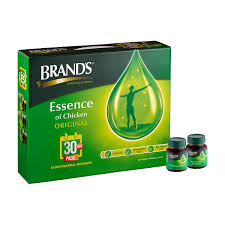
References:
1. Chao JC, et.al. J Nutr Biochem 2004; 15:37-44
2. Soong YY. et al. Br J Nutri 2015; 114(11):1845-1851
3. Sun L, et al. Int J Food Sci Nutr 2015; 66(8):931-935
4. Geissier C, et al. Nutr Rep Int 1989; 39(3):547-556
5. Benton D, Young HA. Curr Top Nutraceutical Res 2015; 13(2):61–70


Image Credit: istock
The Benefits of Goat's Milk For Kids Will Surprise You
The World Health Organization recommends exclusive breastfeeding for the first 6 months. Thereafter, infants should receive complementary foods with continued breastfeeding up to 2 years of age or beyond.1
The impressive health benefits of goat milk has made it a very popular choice, and it is gaining popularity in many families, especially as a natural alternative to cow’s milk for toddlers transitioning from breastfeeding. Read on to discover the many benefits of goat milk in comparison to cow milk.
🥛 Goat Milk Nutrition Will Surprise You
Goat milk is far more nutrient-dense than cow milk, meaning you don’t need as much of it to receive the same (or better) nutrient intake.
A single glass of goat milk contains2:
✅ 40% of daily calcium requirement
✅ 20% of vitamin B
✅ Rich in potassium & phosphorus (for a healthy heart)
✅ Anti-inflammatory property (enzymatic makeup soothes inflammation in gut)
✅ Twice the amount of beneficial fatty acids
✅ Rich in selenium (rare mineral essential for strong immune system functionality)
✅ Source of protein (building blocks for growth & development in kids)

Image Credit: The Blue Room
🥛 Naturally Easier To Digest
Since goat milk forms a softer curd in the stomach than cow milk, it is able to pass through the stomach and intestines at a similar rate to human milk. The fat globules in goat milk are also much smaller, making it easier to digest than cow milk.3
🥛 A Natural Alternative For Milk Sensitive Kids
If your kid is experiencing lactose intolerance, goat milk might just be the answer to your milk-related woes. Not only does goat’s milk contains less lactose than cow’s milk, lactose intolerant tummies are able to digest goat milk far better than cow milk due to higher levels of beneficial fatty acids present (almost double that in cow milk). 4
Milk allergy is most often caused by the presence of allergenic casein protein, alpha-S1, found in cow’s milk. Since goat milk only contains trace amounts of alpha-S1, it may reduce the risk of triggering inflammation or tummy troubles associated with the consumption of cow milk. 5

🥛 Goat Milk Increases Iron Absorption
Toddlers and children have high iron need because of their rapid growth, and iron is a key nutrient for the production of haemoglobin to boost long-term cognitive development. While plenty of toddler-friendly food are high in iron, paediatrics have identified poor iron absorption as a potential problem for children. 6
But here’s where goat milk can help. A research study in the Journal of Dairy Science found that not only does goat milk increase the body’s ability to absorb and use both calcium and iron, but it also does this better and faster than cow milk. 7 The higher contents of vitamin A and C in goat milk also aids the absorption of iron. So start your little ones early on a goat milk diet for increased uptake of iron & copper in their digestive track.
🥛 Powdered Goat Milk For Kids
Decided to give goat milk a try? Now comes to choosing between powdered and fresh goat milk for your kids. Powdered goat’s milk is the preferred choice for toddlers and children as it is obtained by spray-drying fresh goat milk to retain its natural nutritional content, while fortifying the formula with added nutrients to meet the nutritional needs in children during this developmental stage.
Where do I find goat milk formula in Singapore?
For mothers who are looking to switch your children to a goat milk diet, make sure to choose a non-GMO, high quality goat milk, like New Zealand’s Karihome Goat Milk Formula. Their formula milk is enriched with DHA, EPA, AA and other minerals and vitamins that are formulated to meet the nutritional needs of growing toddlers and young children.
All Karihome formulas are made from the highest quality of goat milk in New Zealand and is processed in an ISO 9001 certified factory, where stringent quality checks are made from the collection of milk on-farm to manufacturing and packaging to offer nutritionally complete and safe products for infants and toddlers.
Karihome is available island-wide in leading supermarkets (NTUC, Cold Storage, Giant, Sheng Siong) and even online (Redmart, Amazon PrimeNow).

Providing Nutrition Naturally For All Ages
When combined with a healthy diet, goat milk is a great source of nutrition for children of all ages. Karihome provides milk formula for children from 6 months old to 3 years old and even adults, with specific formula for each different age group to ensure that nutritional needs are met.
Karihome Follow-On Formula (For infants after 6 months)

400g tin ($26.70)
Made from fresh goat milk from pasture-fed goats and fortified with vitamins, minerals and essential nutrients that are necessary for your child’s development.
Karihome Growing-Up Formula (for kids aged 1-3)
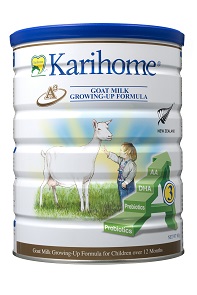
900g tin ($53.40)
The natural goodness of Karihome Growing-Up Formula helps to meet the nutritional needs of active toddlers aged 1 to 3 years old.
Karihome Pre-School Formula (for kids aged 3-7)
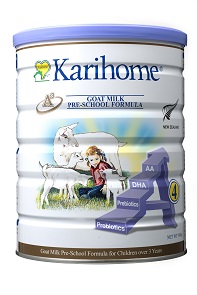
900g tin ($53.40)
A natural progression from Karihome Growing-Up Formula, with fortified blends of nutrients to meet the nutritional needs of this age group.
Karihome Whole Goat Milk Formula (for kids above 7 years old and adults)
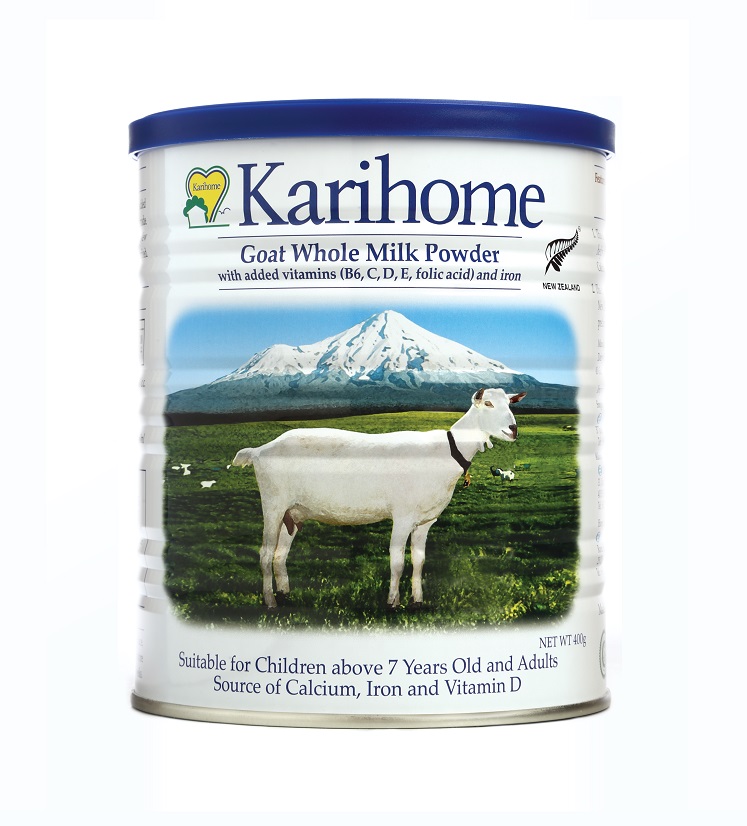
400g tin ($23.00)
This formula is produced from fresh goat milk, from which only water has been removed. The goat milk powder can be reconstituted in water to produce a wholesome and nutritious drink that provides the unique nutritional benefits of goat milk.
*All prices are obtained from RedMart and are accurate at time of this article.
⭐Visit Karihome at Booth L09, Baby Market Fair, from 12- 14 October 2018, at Singapore Expo Hall 5!⭐
References:

The World Health Organization recommends exclusive breastfeeding for the first 6 months. Thereafter, infants should receive complementary foods with continued breastfeeding up to 2 years of age or beyond.1
When breastfeeding is not possible, the next best alternative is formula milk. But with the dizzying array of milk choices in the market, you’ll want the best possible option for your child.
Goat milk is recommended over most dairy-based infant formula, especially for babies with digestive problems or an intolerance to lactose. Read on to discover the benefits of goat milk and why it is the preferred choice amongst parents.
Among the many valuable properties of goat milk is the natural richness of nucleotides – essential nutrients that are associated with impressive benefits for immune function, gastrointestinal development and metabolism. Formulas using whole goat milk have 40-50% higher naturally occurring levels of nucleotides than cow milk based formula.
In addition, goat milk has an abundance of free amino acids which are important for the development of strong bones and iron absorption. A particular amino acid, Taurine, is especially rich in goat milk, amounting to 20 times more than that of cow milk.
This conditionally essential amino acid has an important role in supporting brain development and muscular functions in newborns, and since babies do not produce it naturally, it has to be obtained from breast milk or formula.
With a growing number of infants having issues with formula tolerance, goat milk may be a safe and natural alternative. Goat milk contain less lactose than cow milk, thus lactose intolerant tummies are able to digest goat milk far better than cow milk due to higher levels of beneficial fatty acids present (almost double that in cow milk).2
Intolerance to lactose is most often caused by the presence of allergenic casein protein, alpha-S1, found in cow milk. Since goat milk only contains trace amounts of alpha-S1, it reduces the risk of triggering inflammation or tummy troubles associated with the consumption of cow milk.
The fat content in goat and cow milk is actually similar, but did you know that the fat globules in goat milk are much smaller than those found in cow milk? 3
Goat milk is easier to digest as these bubble-like fat globules are much smaller than cow milk due to a higher proportion of short and medium-chain fatty acids. These shorter chains form a loose and softer curd that is easily digested with little irritation. Cow milk, on the other hand, is made up of longer-chain fatty acid which takes a much longer time to digest.
The body also uses fatty acids as an energy source, but only short and medium chain fatty acids are used. Some studies show that goat milk has up to 40% higher content of medium-chain fatty acids than cow milk.4
Goat milk is more nutrient-dense than cow milk, meaning you don’t have to consume as much to receive the same amount of nutrients.
A single glass of goat milk contains5:
Iron is a key nutrient for newborns for the production of haemoglobin to boost long-term cognitive development. Hence, iron deficiency is not something to be taken lightly. Iron in goat milk is very bioavailable – meaning it can be absorbed and utilised by the body. Studies have shown that the bioavailability of iron in goat milk is far superior to that of cow milk.
A research study in the Journal of Dairy Science also found that not only does goat milk increase the body’s ability to absorb and use both calcium and iron, but it also does this better and faster than cow milk.6 The higher contents of vitamin A and C in goat milk also aids the absorption of iron. So give your little ones a head start on a goat milk diet for increased uptake of iron & copper in their digestive track.
In the early stages of childhood, goat milk is a preferred choice for optimal growth and development, as it naturally retains the unique proteins and richness of bio-actives as compared to cow’s milk.
Its hypoallergenic properties and unique fat structure also make it naturally digestible, giving rise to many benefits in the body while making it a great source of nutrition for children of all ages.
References:

Baby relies on mum to give them all the nutrition that they need during pregnancy! So it’s important for a pregnant mum to eat a healthy, well-balanced diet that includes a ton of fruits and veggies.
Benefits of fruits and vegetables!
Empty Calories, they’re something that you should avoid during pregnancy. What do I mean by ‘empty calories’? It’s pretty much junk food and snacks that don’t have any form of benefit for baby and mum.
Fruits and vegetables are chock full of nutrients! When you add a variety of them to your diet, it’s pretty much guaranteed that you’ll get most of the vitamins, minerals, and fibre that you and your baby need. Eating fruits and vegetables also helps prevent constipation, a common symptom during pregnancy.
Now let’s get down to the fruity business:
1. Oranges

When you’re pregnant, your sweet tooth might become a lot bigger than usual, but try not to grab some cake or chocolate to satisfy it! The healthier alternative would be to eat some sweet fruits instead – it’ll appease your sweet cravings while still being nutritious.
Firstly, we have the fruit named after a colour – oranges! They’re yummy and juicy, and help you stay hydrated. What’s more, they’re a great source of folate, a B vitamin that helps prevent brain and spinal cord defects (aka neural tube defects).
They’re most well-known for their richness in vitamin C too – an antioxidant that helps prevent cell damage and helps your body to absorb iron.
2. Mangoes

Also quite orange, but not as orange as oranges, the mango is another sweet fruit that contains a lot of vitamin C. One cup of mangoes will give you 100% of your recommended daily allowance of vitamin C.
They’re also high in vitamin A, and vitamin A deficiency at birth is associated with lower levels of immunity and a higher risk of complications such as diarrhoea and respiratory infections.
However, it’s rare but it’s possible to get an overdose of vitamin A. Even though mangoes are a great addition to your pregnancy diet, eat them in moderation as they’re also very high in fructose (sugar)!
Continue reading on the next page...
3. Bananas
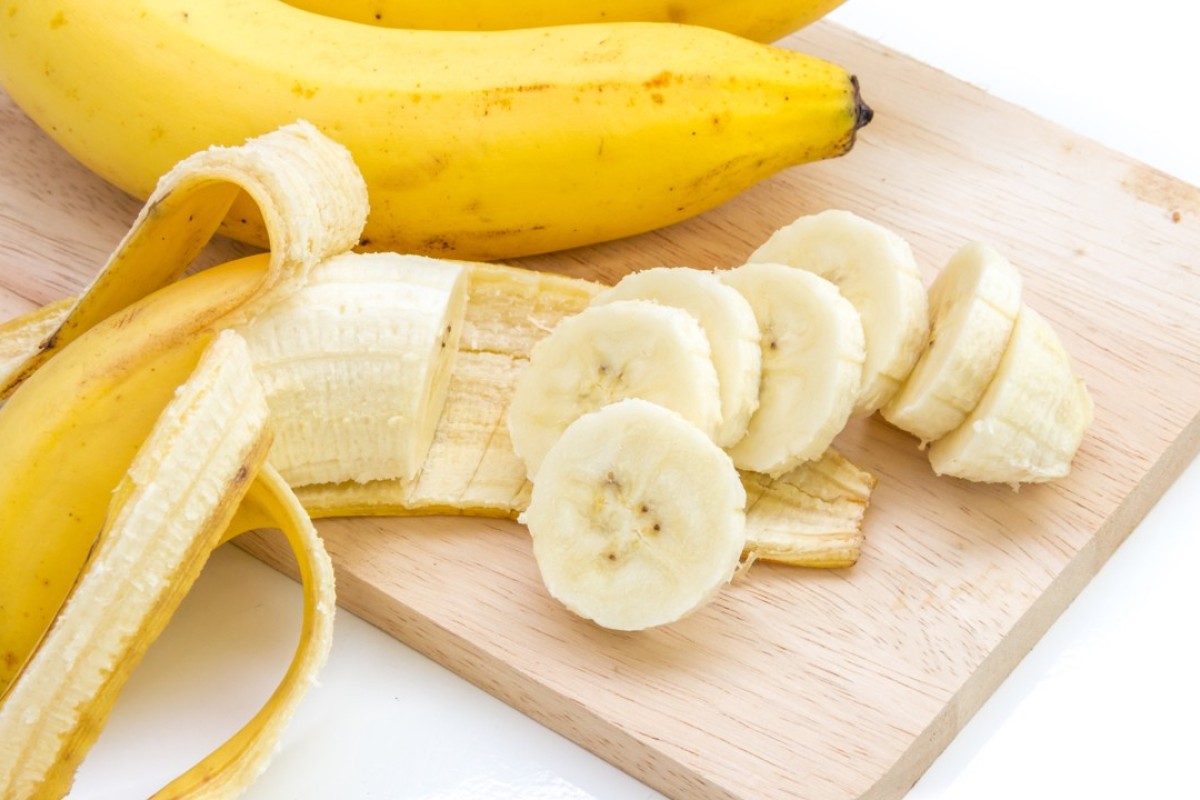
Bananas are a great source of potassium, vitamin B-6, C, and fibre! Constipation is very common during pregnancy, and could be caused by a number of things, such as:
So adding fibre-rich bananas could help out with constipation.
4. Avocados
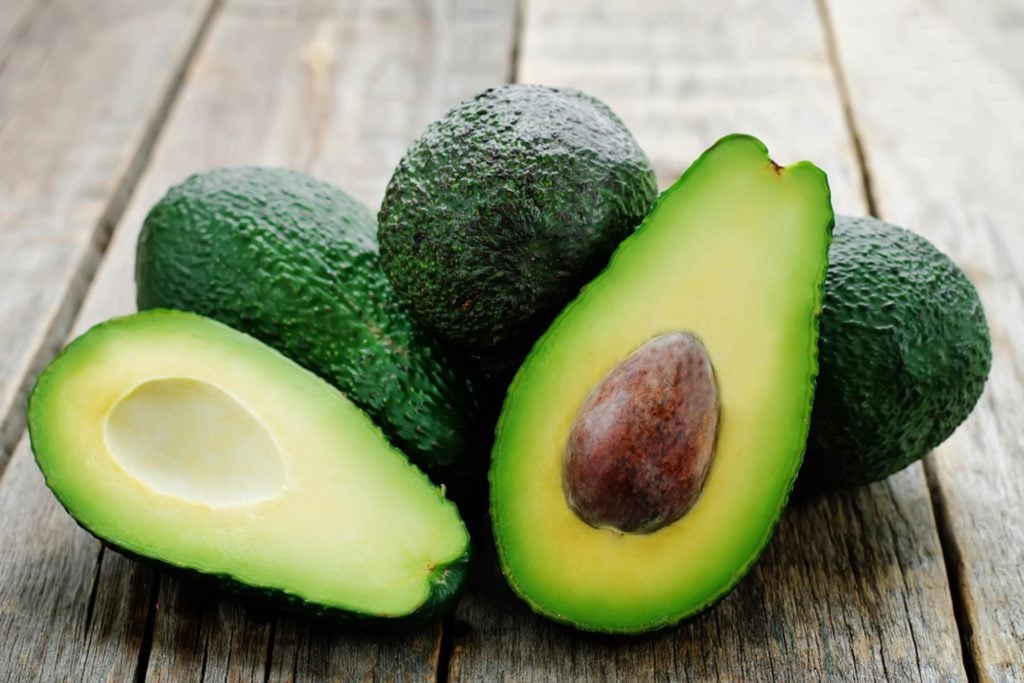
Avocados are a powerful fruit that contains a good amount of healthy fat, as well as a LOT of nutrients such as:
5. Apples
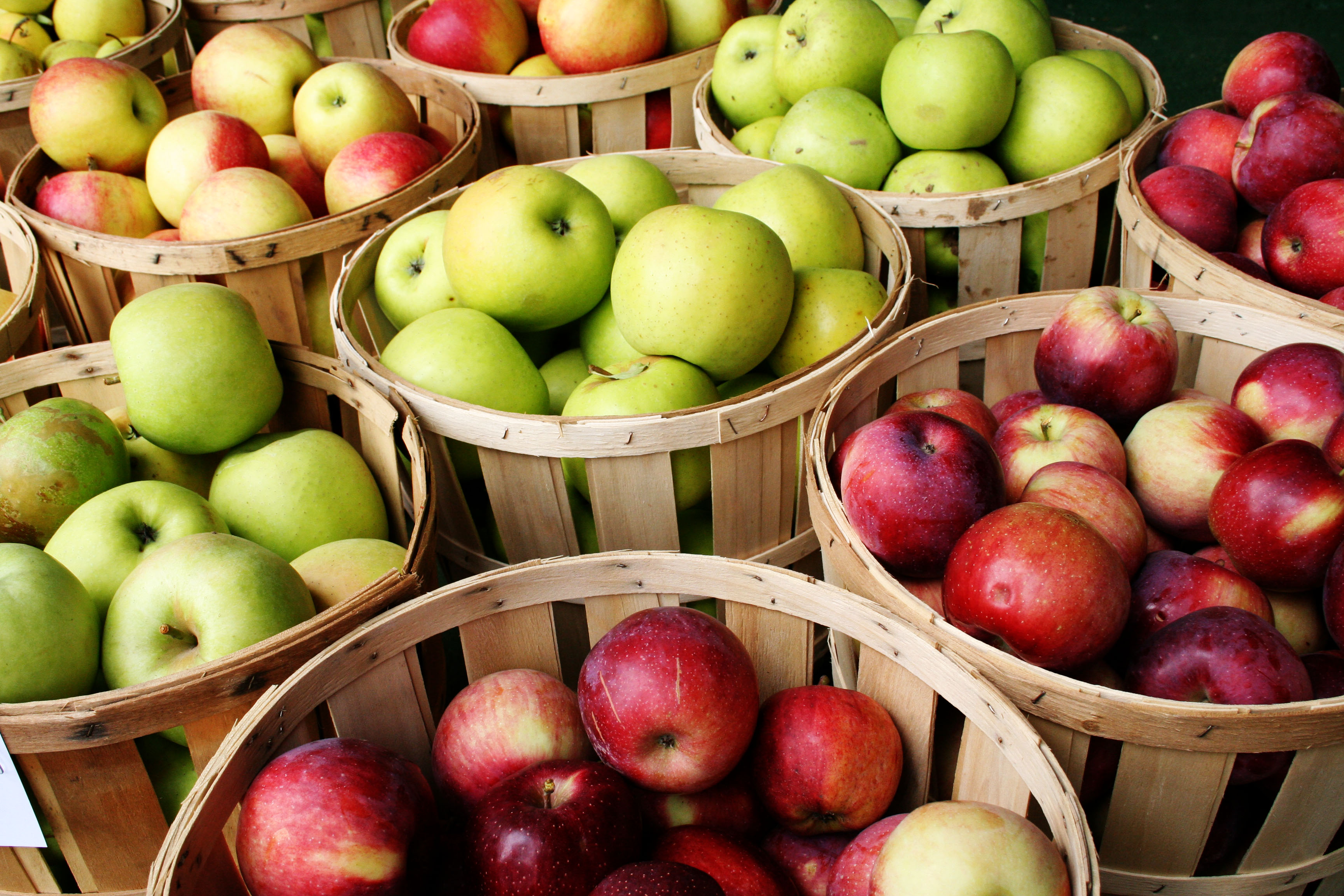
The humble apple is high in fibre, and is a good source of vitamin A, C, and potassium. A study found that children of mums who ate apples regularly during pregnancy were less likely to have childhood asthma and allergies.
Pregnancy and Baby Singapore provides you with the latest news and practical tips to help you in your parenting journey. For more tips on your pregnancy and baby in Singapore, subscribe to our mailing list and like us on Facebook, to receive new articles for mummies like you every week!

The weather these days are insane! Heat and humidity can be tough, but it’s even tougher when you’re pregnant. Our body temperature naturally runs a bit higher when you’re pregnant. So the added heat of a warm summer day is bound to make you more uncomfortable.
We’ve got some practical tips from other moms who’ve been in your sweaty shoes. Grab a fan and get ready… your summer pregnancy survival guide is here.
Clothing
Wear loose comfortable clothes that aren’t constrictive, particularly around your waist. Dark coloured clothing holds heat, so stick to lighter shades. Also, be sure to choose breathable fabrics (like cotton) so you don’t sweat as much. This helps prevent heat rash, a common problem for pregnant women in warmer weather.
Exercise
Workout at the cooler times of the day to avoid overheating. Your best bet during this period? Get in the pool! Swimming is a great way to cool off, and it helps take the weight off your sciatic nerve, so it’s a win-win for expectant moms!
Sun
Did you know pregnant women are more prone to sunburn? It’s true. You need to be even more careful to avoid the mid-day sun as a result. Do any outdoor activities in the morning or evening. If you do step outside, be sure to use a high SPF sunscreen to protect your more sensitive skin. A natural (non-chemical) sunscreen formula is also recommended.
Hydration
Getting enough fluids is especially tough in the hot months. Dehydration can be a major problem for pregnant women. Ordinarily, you should drink two litres of clear liquids every day. But in the summer, you need to add at least 300 ml for every hour you spend in the heat. Get in the habit of carrying a water bottle with you everywhere you go to make sure you’re drinking enough. If plain water makes you feel nauseous, try a fruit-infused water bottle to add a little flavour.
If you feel dizzy, lightheaded, or weak at any point during a hot day, get indoors as soon as you can! Drink water or electrolyte replacement liquid until you feel better. Some moms also suggest carrying a water-filled squirt bottle with you so you can mist yourself when you start to feel warm. This can be a lifesaver in really hot weather.
Naps
Your body is working hard to grow a healthy and beautiful baby. You’re tired, hot, and cranky. We get it! That’s why we want to encourage you to take as many naps as you can close to a fan or in an air conditioned room. Cool air and a little bit of sleep can do wonders for your well-being. If you have small children, take your nap when they take theirs. Everyone wins!
Swelling
A common problem in summer pregnancies is the dreaded leg swelling, or edema. In the hot summer months your ankles, calves, and feet can become one bloated uncomfortable mess. Not fun! But there are steps you can take to reduce swelling and feel better. Here is a quick list of Do’s and Don’ts for women experiencing swelling while pregnant:
Do
Don’t
Pregnancy and Baby Singapore provides you with the latest news and practical tips to help you in your parenting journey. For more tips on your pregnancy and baby in Singapore, subscribe to our mailing list and like us on Facebook, to receive new articles for mummies like you every week!

Understanding TCM
The practice of TCM originates from the writings of HuangDi NeiJin more than two thousand years ago. It remains a cornerstone of healthcare in modern China. In fact, the philosophies underpinning TCM has interwoven into the cultural DNA of Chinese people all over the world, shaping their lifestyles, disease prevention, and sickness management.

Doing a bit of a workout while you’re pregnant is something that’ll help you throughout your pregnancy. You don’t need fancy equipment, gym membership, or even a lot of time committed to stay fit.

There’s already so much you have to give up when you’re pregnant. You’ll love us for telling you this – caffeine isn’t one of it!
Everyone loves their morning coffee and tea – it helps us wake up and gives us the needed boost to kickstart our day! It’s pretty much become a habit for us to grab that morning cup, but pregnant ladies who were heavy drinkers of coffee and tea really should cut down on those drinks during their pregnancy and have it in moderation.
Caffeine, like anything else that pregnant ladies consume, will be passed on to the baby that’s growing inside them via the placenta. However, because baby’s metabolism hasn’t matured yet, they won’t be able to fully process the caffeine.
According to the American College of Obstetricians and Gynecologists, a “moderate amount” of caffeine during pregnancy is defined as less than 200 milligrams a day.
We’ve listed down the amount of caffeine that’s in your usual Kopi and Teh. Do note though, the amount stated is based on the average coffeeshop cup size. But remember, foods such as chocolates and certain soft drinks, contain caffeine too, so take them into account when deciding if you should have a second cuppa!
Here are caffeine values for some drinks:
These values are on average.
Kopi from your local kopitiam
Teh from your local kopitiam
Starbucks Coffees (Take note that the caffeine content in Starbucks drinks can vary even when ordering the same drink from the same outlet)
Caffe Americano
Caffe Latte
Espresso
Soft Drinks (Can)
Also take note that the above list is only for caffeine content – some of those drinks may have less caffeine in them, but are actually a LOT sweeter than those with higher caffeine. All that sugar could lead to gestational diabetes, which is also bad for both you and your baby!
Get the latest articles on all things pregnancy and baby! Subscribe to our mailing list and like us on Facebook!

Here we bring you 8 effective exercises to induce labor naturally and will also surely help getting your body ready for the baby.

Also known as pelvic tilt, this is considered the best exercise to induce labor in a natural way. This exercise is pretty simple and can be done at home. Just lie down on your back and keep your knees bent, your foot on the floor. Now flatten your back against the floor and simultaneously bend your pelvis upwards and hold for 10 seconds and slowly release. This exercise, when done twice a day for 10 minutes, can help your pelvic muscles get ready for labor.

The birth ball is your lifesaver when it comes to exercising during the entire pregnancy period, and will also help you transcend into labor easily and naturally. Make sure you have a professional instructor for your guidance at all times. Leaning against an exercise ball can exert pressure on your lower back and pelvic muscles and will help you get ready for childbirth. The exercise ball will also help you ease pains during labour and ensure a natural delivery that is quick and effortless.

Squatting is the best, and probably a foolproof way to get started into labor. Why? Well, because squatting helps the gravity act on your baby and tends to push it downwards, thereby inducing labor naturally. If you’re concerned about all the funny looks that you may get for squatting in a public park, you can also try this at home – just keep doing gentle squats till you feel a burning sensation coming up.

Surprised? Yes, just taking a simple walk every day can have tons of benefits for your body, and this low-impact aerobic exercise is just the perfect way to induce labor. Thousands of women around the globe have experienced the effectiveness of this simple exercise when it comes to help the body get ready for labor. It is believed that walking may be particularly helpful in inducing uterine contractions in women who may have been advised bed rest during pregnancy or who didn’t carry out physical activity whatsoever. Walking is believed to help your baby descend into the lower part of the uterus and helps the cervix dilate, getting it ready for labor.

Kegal exercises, also known as pelvic floor exercises, aren’t just limited to those affected by urinary incontinence, may be wonderfully effective in inducing labor among women who are overdue. Kegal exercises work by targeting the muscles of the pelvic floor, which play an important role in childbirth. Releasing and contracting the pelvic muscles (the muscles that are involved in stopping the flow of urine) for around 10-15 minutes a day is a good way to get the pelvic muscles ready for delivery.

Butterflies or tailor sitting is a simple exercise that strengthens and stretches the muscles of the back, thighs and pelvis. It keeps your pelvic joints flexible, eases blood flow to your lower body and eases labor. All you need to do is to sit on the floor with the bottom of your feet together. Then using your elbows, press both the knees gently towards the floor to feel the stretch in your inner thighs. You can use a wall for supporting your back. Remain in the position for 10 to 15 seconds and repeat the stretch 5 to 10 times.

Lunges are another great way to induce labor naturally. Stand with your two legs together and take one big step ahead. Position one leg forward with your knee bent while the other leg is positioned behind. There are two types of lunges you can do –
Lunge and a push up against the wall – With your hands, try to push up against the wall by bending your knee and stretch the muscles as much as you can. Bring back the leg to standing position.
Vertical lunge – The vertical lunge is also same as the above lunge, but stretches more on the lower back and tail bone. You can refuel your body when doing this lunge as it requires additional energy and push. Including a carb can refuel your energy.
The lunges are a great way to warm up the hips and give more room for the baby to rotate and descend. To be safe, you can take as support of your partner or a doula when performing these lunges.

Climbing a few flight of stairs slowly will help you have a safe labor. It will elevate your heart beat, and the motion makes your baby’s head drop down into the birth canal. Also, it opens up the pelvic region and presses the cervix facilitating dilation. These all together begins the contractions and makes you get ready for the labor.
Believe it or not, exercise is actually a wonderful way to induce labor, as it helps your body get ready for the stressful situation of childbirth and will ease labor pains too. What’s more, it is completely natural and you will experience almost no side effects whatsoever associated with this form of labor induction as opposed to other artificial labor induction methods. Make sure you have a doctor or midwife (or your spouse for that matter) while you’re exercising- after all, you may never know when you get into labor and you may need help.
Subscribe to our mailing list and LIKE US for more updates on all things related to your pregnancy!
Article was originally posted on Momjunction
Copyrighted Pregnancy & Baby by Mummys Market 2019


